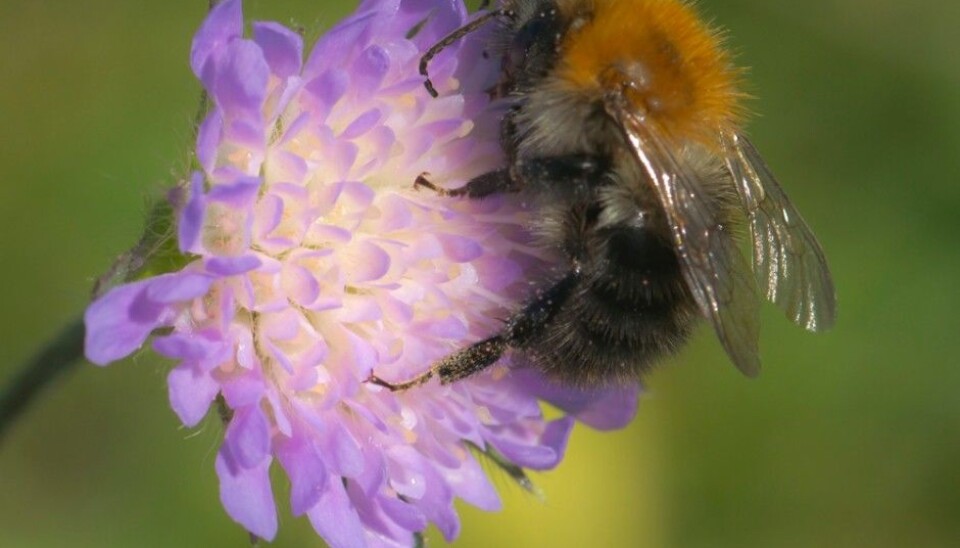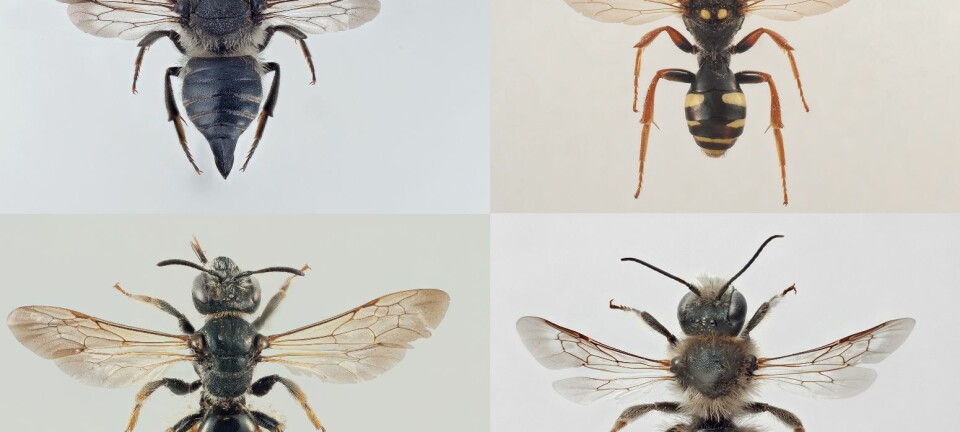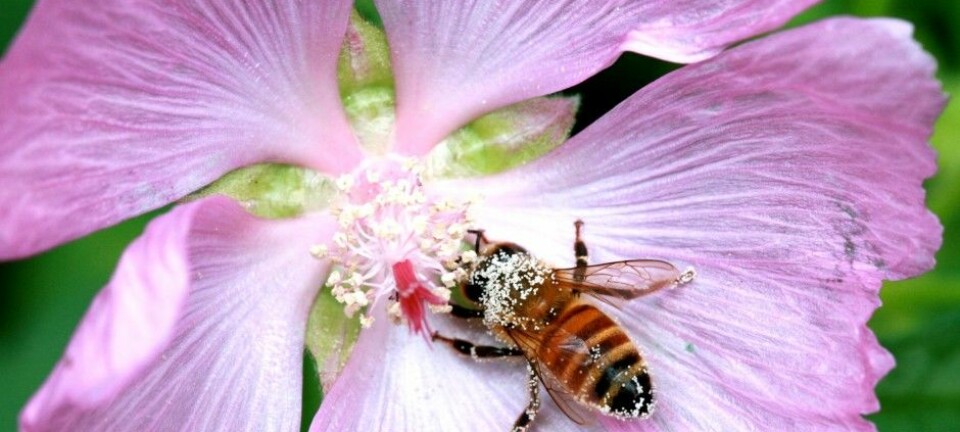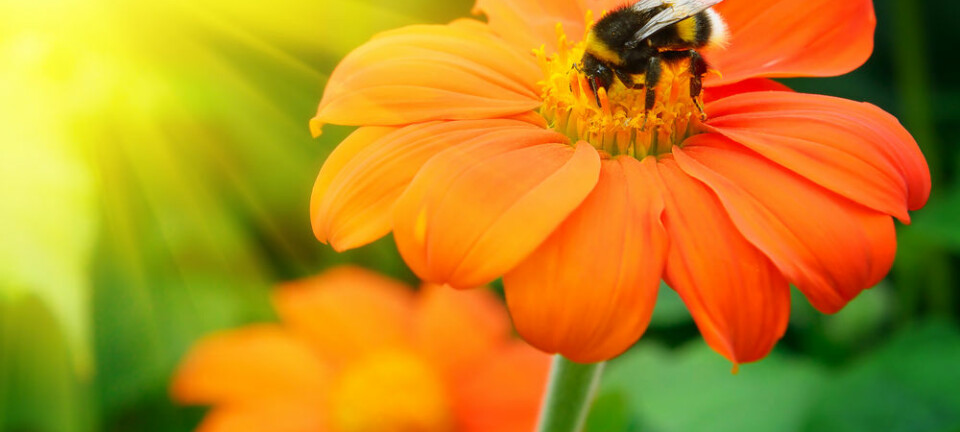
Wild bees lose the fight for flowers
A new study confirms what researchers have thought for some time: Honeybees out-compete wild bees and bumblebees.
Some who are concerned about the massive deaths of bees and bumblebees start up as beekeepers, reasoning that hives provides a source of honey as well as helping to sustain pollination of crops.
Scientists are disinclined to support such efforts, saying that these might only make matters worse for wild bees and bumblebees, which are also great pollinators.
A study from Lund University in Sweden shows that the competition among bees for food is formidable. Wild bees end up drawing the shortest straw.
In areas where the researchers set up hives of honeybees the bumblebees disappeared almost entirely.
Surprised by the effect
The scientists placed hives at ten different sites around Skåne in South Sweden. As control sites, they studied ten other places within a kilometre from the beehives. Then they counted numbers of bumblebees in the various spots.
The study showed clearly that the honeybees are the winners in the fight for food. The wild bees and the bumblebees had buzzed off.
“I was amazed to see how clear the effect of this competition was,” says researcher Lina Herbertsson of Lund University in a press release.
She says this was the first experiment on such a large scale that tested competition between domesticated honeybees and wild bees.
Essential data
The Norwegian apiarist Frode Ødegaard at the Norwegian Institute for Nature Research (NINA) finds it far from surprising. He says that earlier research in Norway and Denmark has also shown that wild bees are the underdogs in such battles.
“But this is really important to research.”
Ødegaard says the experiment confirms that large colonies of honeybees should not be placed anywhere without carefully considering resource supplies. In other words, clarity is needed about how many plants there are that produce various pollens and nectar throughout a season in any given area.
Can spread viruses
The honeybee is a domesticated insect that doesn’t naturally belong in Norway. It is just one of 208 bee species, including bumblebees, that are found in the country.
The honeybee is the species that started the concern for the survival of bees in the world when whole colonies started dying in the USA about ten years ago.
Not only do they compete in scrounging around for food, commercial honeybees can also infect wild bees through the pollen that is left on flowers. Diseases in hives can spread to wild stocks.
Viral diseases have already been observed in bumblebees.
“This can be very serious,” says Ødegaard.
Wild flowers help
The Swedish researchers found a correlation between the amounts of wildflowers growing in a landscape and how well wild bees managed in their competition with domesticated honeybees.
Ødegaard says this indicates a solution to the problem.
Someone needs to consider the access to nectar in an area before permitting beekeepers to pursue their hobby or profession there.
Better regulation
He thinks better regulation is needed to limit the number of honeybee hives in a given area.
“Honeybees should be limited or banned in areas where wild bee species are under threat.”
In Norway no one currently needs a permit to start keeping hives of bees ― yet everyone is supposed to register apiaries with the Norwegian Food Safety Authority, informs Bjørn Dahle, a senior advisor at the Norwegian Beekeepers Association.
He says that Oslo is the only municipality in Norway that limits the number of beehives that can be established. The rationale behind that is a concern for wild bees in the capital city,
Dahle suggests that agriculture in Southern Sweden, where the terrain is fairly flat, is a much more intensive industry than it is in Norway.
“Only three percent of the land in Norway is cultivated. This is why the competition between honeybees and wild bees is no major problem here,” he says.
Specialised
Ødegard asserts that Norway sustains a wide diversity of bumblebees and other bees and they are highly specialised. They tend to rely on pollen from different types of plants.
“They have a short adult lifespan and are in flight at the same time that their nutrient plants are growing. Bumblebees are out and about the whole summer season and depend on stable access to nectar and pollen,” says Ødegaard.
------------------------------------------------
Read the Norwegian version of this article at forskning.no
Translated by: Glenn Ostling








